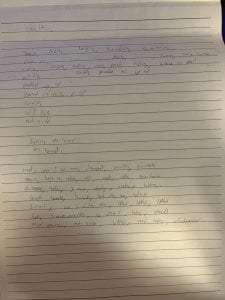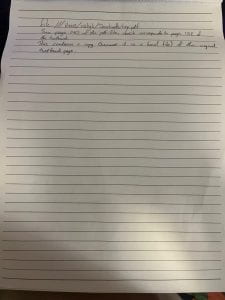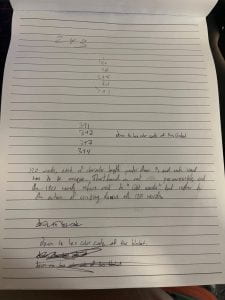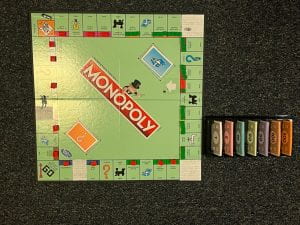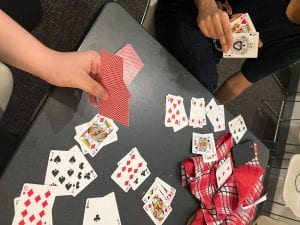Inspiration: My own personal experience since starting college. I wanted the player to feel an overwhelming amount overwhelming while playing the game through tasks.
Jason Rohrer’s “Passage” helped me create the idea of trying to invoke a feeling/ experience from the audience.
Title: Overwhelming
This is a 1 v 1 style game.
Setup:
One timer set to 5 minutes
Each player recieves 8 task cards (each card should be different)

Task Cards:
- 2 Math cards (complete 3 math problems)
- 2 connect the dots cards
- 2 draft emails to your professor (prompt is different on both cards)
- 2 Send 3 messages
- 2 Choose cards (about exercising)
- 2 Check your emails
- 2 Write a to-do list (1 card is about a to-do list for today while another is for tomorrow)
- 2 Write down what you plan to eat later
Additionally each player is given a math worksheet and connect the dots pages.
Math worksheets were found here: https://www.crk12.org/cms/lib/DE01903180/Centricity/domain/529/unit%20one/order%20of%20operations/Common%20Core%20Sheets.pdf
Connect the dots pages were found here: http://cms5.revize.com/revize/franklinlifelong/Solutions/Solutions%2020-21/At%20Home%20Activities/Activities%20through%204-14/Extreme%20Dot%20to%20Dots%201.pdf
Gameplay:
Once the timer has started, each player is recommended 30 seconds per task in order to go through as many tasks as possible. Every minute an event card spawns in which players must stop what they are doing to try and complete that task. Once the event card is finished, players may resume trying to complete their tasks. Each event card is different and the players are responsible for keeping track of the time. In addition, event cards that require you complete a seperate task (Registration and Billing) gives the player that completes them an extra completed task. The player with the most completed tasks by the end of the 5 minutes wins the game.

Event Cards:
- Re-do a task you just finished
- Registration has opened (look for 4 classes from different subjects) (Both players may win)
- Billing statement (pay $250) (Only one player can win)
- Time for a snack (take a 30 second break)
- You got an extension (you have 30 seconds to finish a task you didn’t complete before)

Items for event:
On the left, there is bills that add up to $410. So that way only one player can win.
On the right, there are papers with various classes written in them. Each class is different and also some are full which means you can’t enroll in that class and have to find another.
Artist Statement:
As you can probably tell by title, the theme of this game is being overwhelmed and stressed. I wanted to create an art game that simulates being a college student is a still fun kind of game. When I first started making this game, I had 3 things in mind: how am I going to overwhelm the players, what kind of game should this be (1 person, 1 v 1, 1 v all, etc), and how do I make it also fun in a sick twisted way. After reflecting on myself and my experience, I settled on a 1 v 1 style game because I constantly try to compare/compete with other people even subconsciously. Having the players compete against each other helps increase the stakes, and stress the players even more. In terms of gameplay, I knew having a timer would be a central element in stressing players out because time stresses everyone out especially when you don’t have enough of it, forcing players to complete tasks, keep track of event cards, and time manage everything. My game is an art game that allows the player to experience stress and being overwhelmed. I got this idea from “Passage” by Jason Rohrer. In the “Works of Game ” by Sharp the way he explained the game really pulled at my heartstrings,basically being the passage of time and how we all die in the end convinced me to try the same thing in my game. An art game is supposed to be an immersive experience that portrays what you want the players to feel. I hope I was able to accomplish that in my game.


